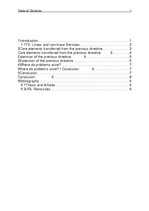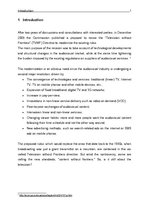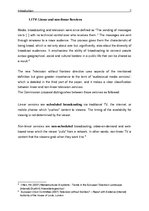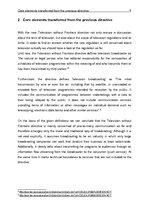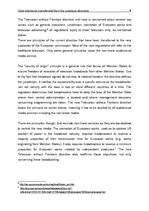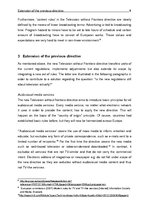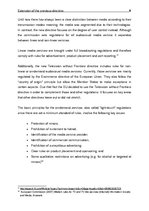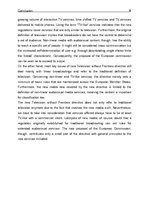-
Television without Frontiers 3.0
Novērtēts!Referāts11 Sabiedriskās attiecības, Starptautiskās organizācijas, Žurnālistika
| Nr. | Sadaļas nosaukums | Lpp. |
| 1 | Introduction | 1 |
| 1.1 | TV: Linear and non-linear Services | 2 |
| 2 | Core elements transferred from the previous directive | 3 |
| Core elements transferred from the previous directive | 3 | |
| Extension of the previous directive | 5 | |
| 3 | Extension of the previous directive | 5 |
| 4 | Where do problems arise? | 8 |
| 5 | Conclusion | 8 |
| Where do problems arise? / Conclusion | 8 | |
| Conclusion | 10 | |
| 6 | Bibliography | 11 |
| 6.1 | Thesis and Articles | 11 |
| 6.2 | URL Resources | 11 |
After two years of discussions and consultations with interested parties, in December 2005 the Commission published a proposal to revise the "Television without Frontiers" (TVWF) Directive to modernize the existing rules.
The main purpose of the revision was to take account of technological developments and structural changes in the audiovisual market, while at the same time lightening the burden imposed by the existing regulations on suppliers of audiovisual services. 1
The modernization is an obvious need since the audiovisual industry is undergoing a second major revolution, driven by:
The convergence of technologies and services: traditional (linear) TV, Internet TV, TV on mobile phones and other mobile devices, etc.;
Expansion of fixed broadband, digital TV and 3G networks;
Increase in pay-per-view;
Innovations in non-linear service delivery such as video on demand (VOD);
Peer-to-peer exchanges of audiovisual content;
Interwoven linear and non-linear services;
Changing viewer habits: more and more people want the audiovisual content following their time schedule and not the other way around;
New advertising methods, such as search-related ads on the internet or SMS ads on mobile phones.…
Universitātes darbs. Jaunās ES "Television without frontiers" direktīvas analīze.


